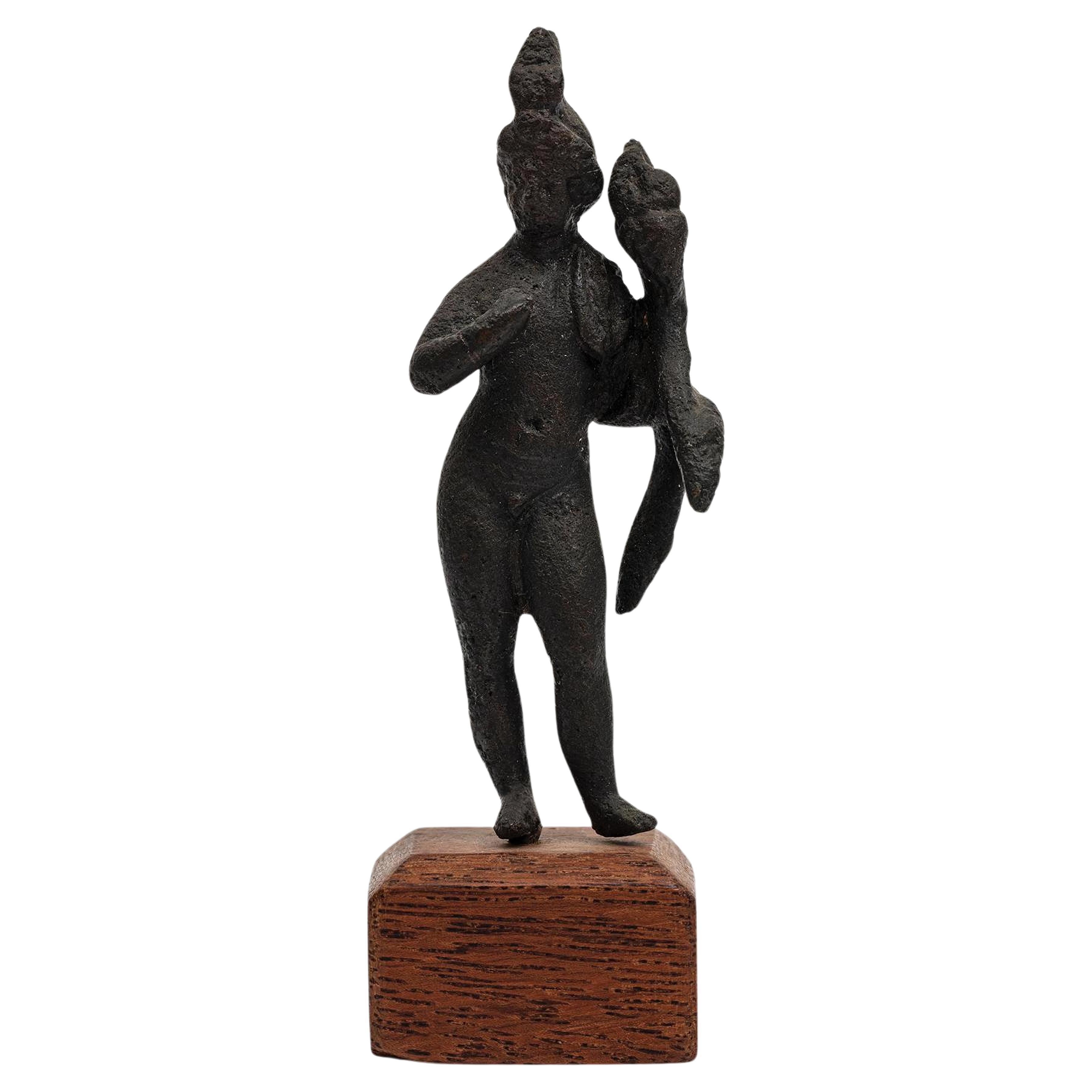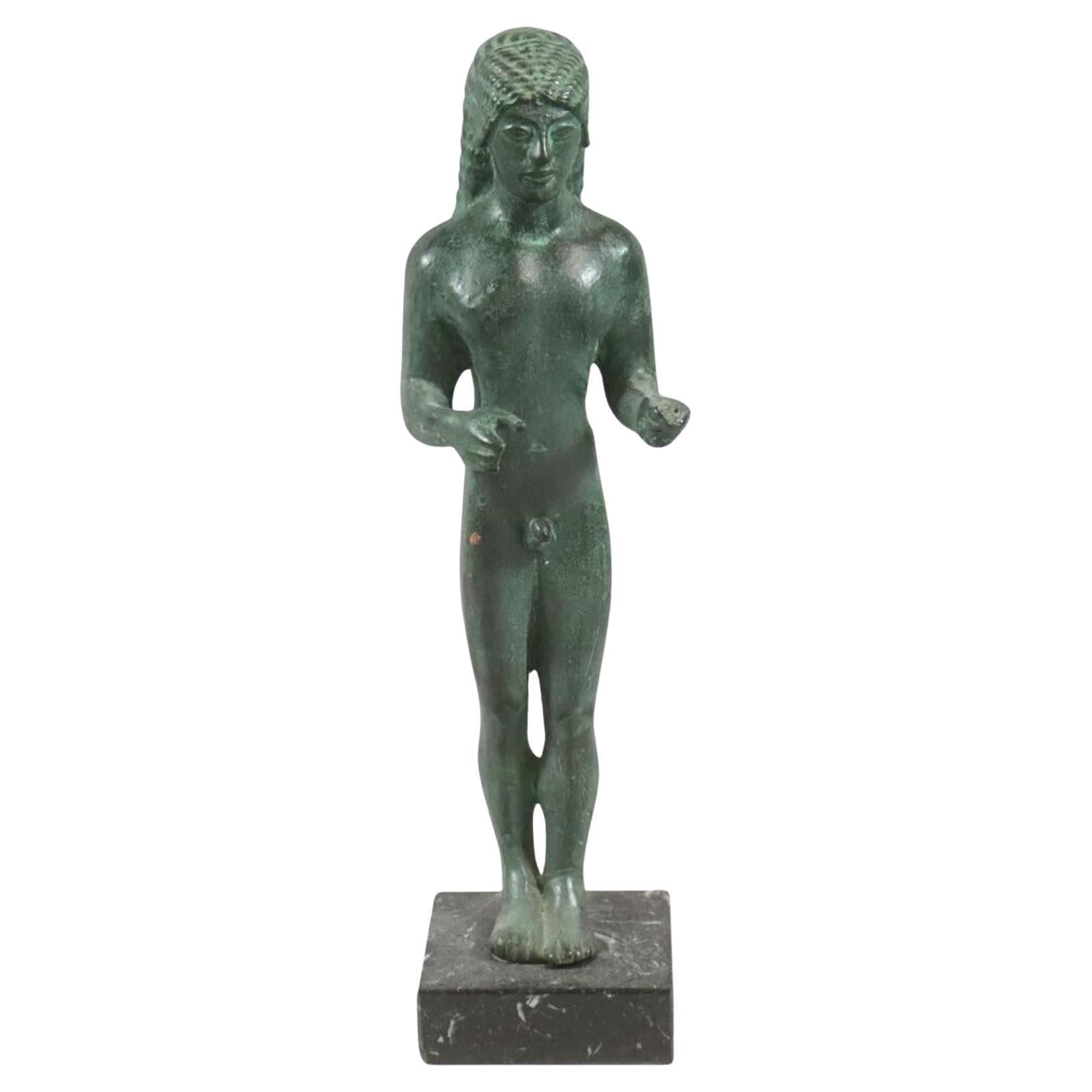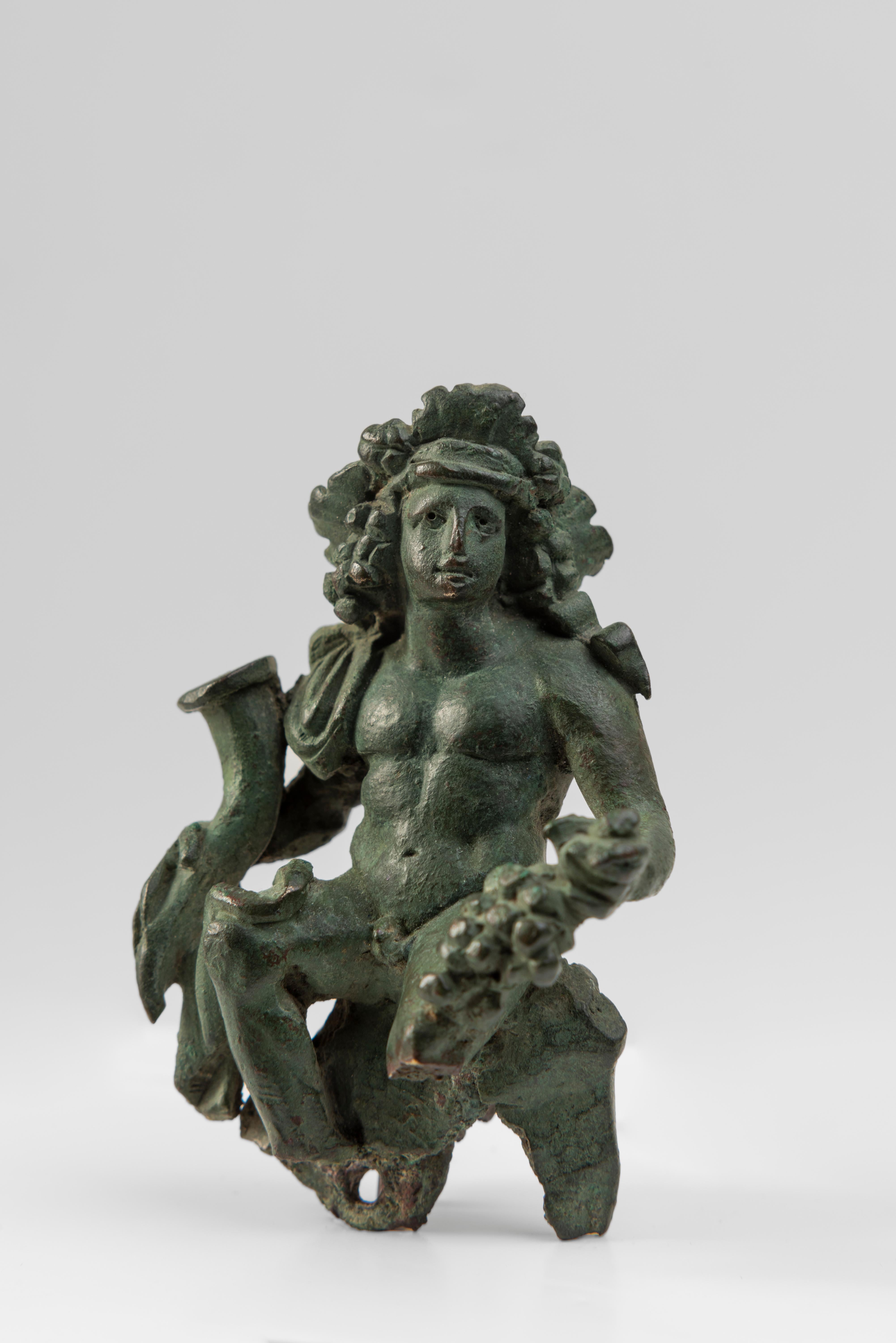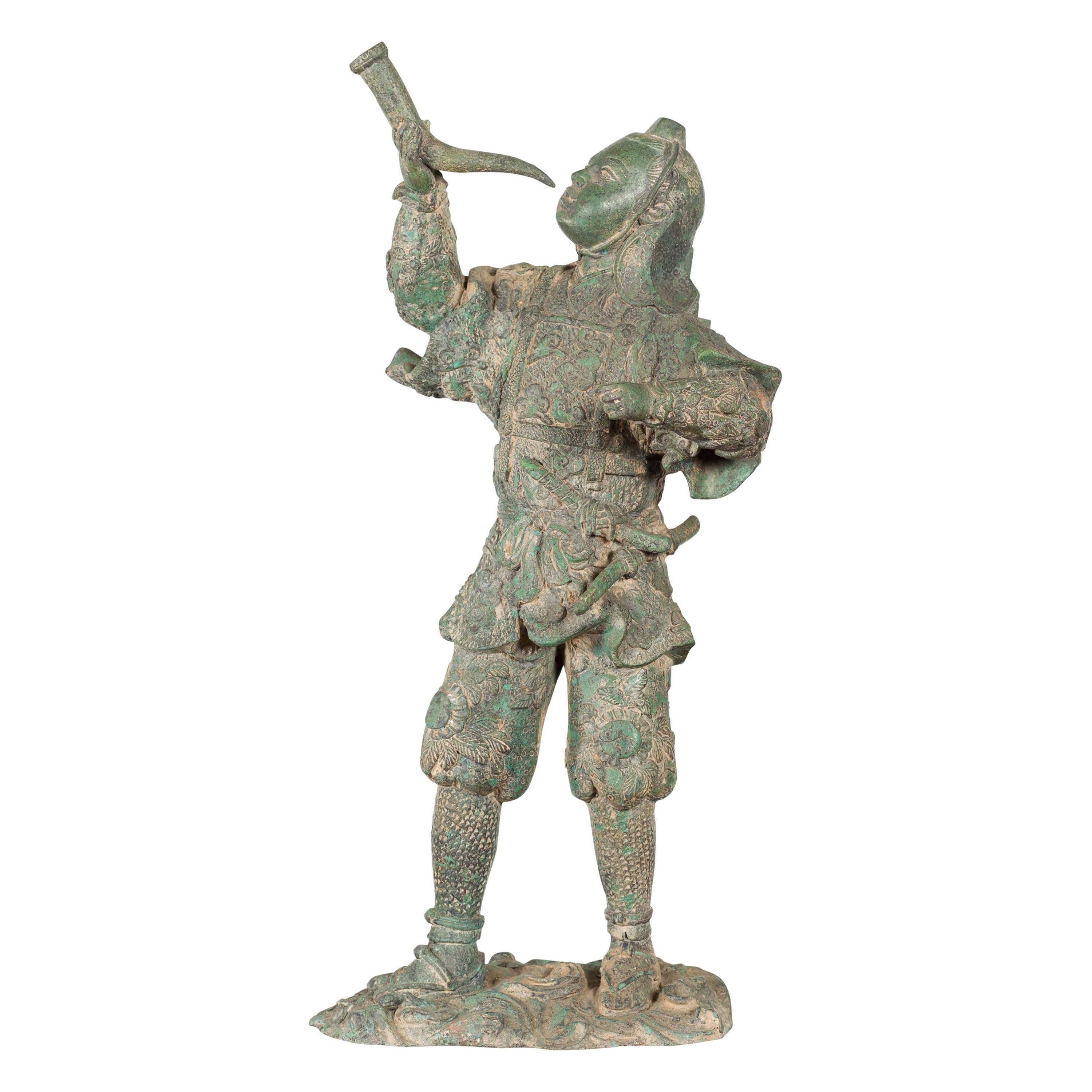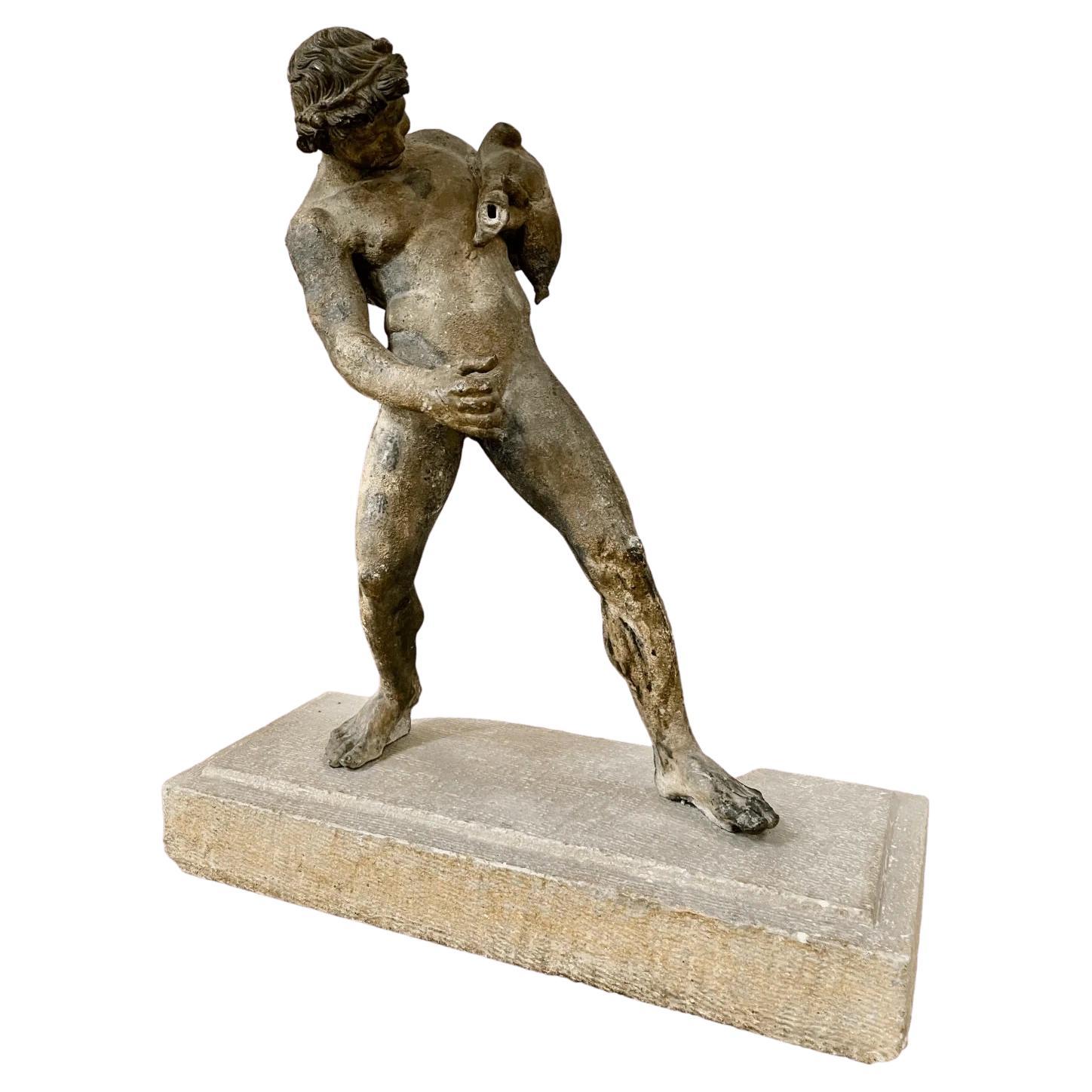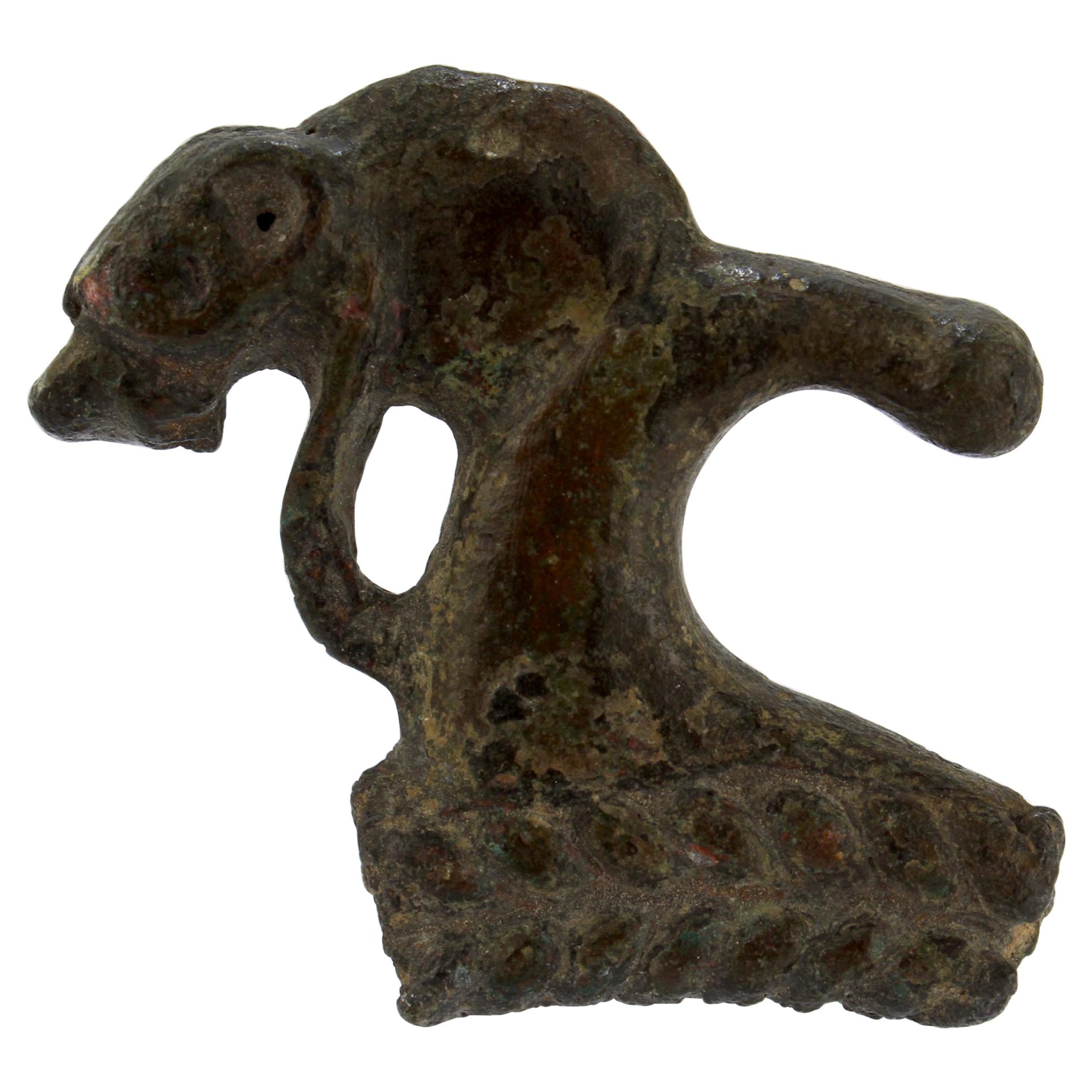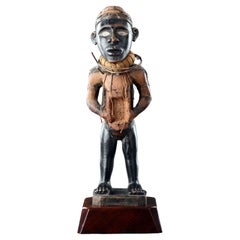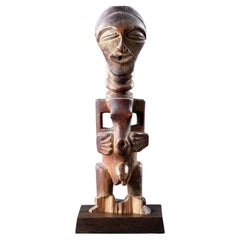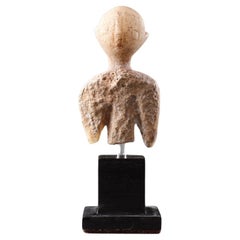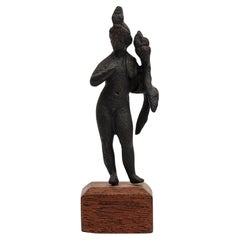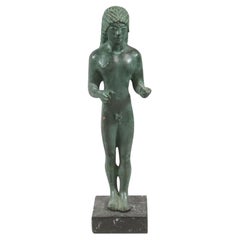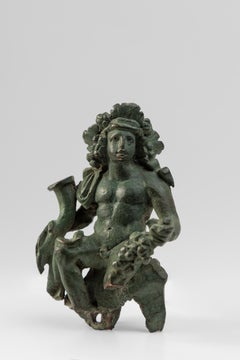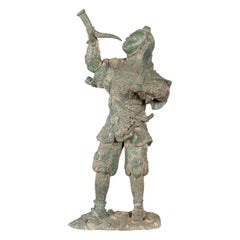Items Similar to A Rare and Finely Detailed Greek Bronze Statuette of an Actor with Large Phallus
Want more images or videos?
Request additional images or videos from the seller
1 of 8
A Rare and Finely Detailed Greek Bronze Statuette of an Actor with Large Phallus
$33,000
£24,790.52
€28,587.51
CA$45,791.80
A$50,884.80
CHF 26,664.17
MX$624,011.33
NOK 340,086
SEK 319,940.42
DKK 213,364.98
Shipping
Retrieving quote...The 1stDibs Promise:
Authenticity Guarantee,
Money-Back Guarantee,
24-Hour Cancellation
About the Item
A Rare and Finely Detailed Greek Bronze Statuette of an Actor with Large Phallus
Bronze
Greek
First half of 4th Century BC
Size: 10.5cm high - 4¼ ins high
Provenance:
Ex Private collection Canterbury, Kent, UK
Thence by descent to the father who in turn passed the figure on, amongst a collection of antiquities, to the uncle of the last owner in the 1960s
cf:
For a similar bronze figure see: Webster, T.B.L; ‘Monuments Illustrating Old and Middle Comedy’ London, 1978, pg. 58 - 59 AT22f
Literature:
Bieber M., The History of the Greek and Roman Theatre, Princeton, 1961, pp. 45-48, n. fig. 198, and Trendall A.D. – Webster T.B.L., ‘Illustrations of Greek Drama’, London, 1971, p. 127, pl. IV, 9, n. 20.
This amusing and finely detailed figure probably dates from the beginning of the 4th century BC, possibly after the last works by Aristophanes. The ‘comic’ mask was certainly used up to around 330 BC after which Meander changed the nature of Athenian comic theatre creating the ‘New Comedy’.
The short sleeved tunic is fastened at his left shoulder, indicating a person of inferior rank. Wearing his ‘comic’ mask with gaping mouth would indicate the actor is in ‘full flow’, with his arms in an animated theatrical pose. The comedic nature of ‘his’ act is further accentuated by the absence of his tights and the shortness of his tunic, revealing his genitals beneath his rounded stomach, for all to see !
- Dimensions:Height: 4.5 in (11.43 cm)Width: 4 in (10.16 cm)Depth: 2.5 in (6.35 cm)
- Materials and Techniques:
- Place of Origin:
- Period:
- Date of Manufacture:First half of 4th Century BC
- Condition:Wear consistent with age and use. Minor losses.
- Seller Location:London, GB
- Reference Number:1stDibs: LU9363237205652
About the Seller
No Reviews Yet
Recognized Seller
These prestigious sellers are industry leaders and represent the highest echelon for item quality and design.
Established in 1989
1stDibs seller since 2023
- ShippingRetrieving quote...Shipping from: London, United Kingdom
- Return Policy
Authenticity Guarantee
In the unlikely event there’s an issue with an item’s authenticity, contact us within 1 year for a full refund. DetailsMoney-Back Guarantee
If your item is not as described, is damaged in transit, or does not arrive, contact us within 7 days for a full refund. Details24-Hour Cancellation
You have a 24-hour grace period in which to reconsider your purchase, with no questions asked.Vetted Professional Sellers
Our world-class sellers must adhere to strict standards for service and quality, maintaining the integrity of our listings.Price-Match Guarantee
If you find that a seller listed the same item for a lower price elsewhere, we’ll match it.Trusted Global Delivery
Our best-in-class carrier network provides specialized shipping options worldwide, including custom delivery.More From This Seller
View AllA Powerful Kongo Fetish Figure
Located in London, GB
A Powerful Kongo Fetish Figure
Wood, metal, cloth, nails, glass
Areas of dark, black lacquered patina, worn through from use
The cavity to the stomach now empty
Kongo Peoples, Dem...
Category
Early 20th Century Congolese Tribal Art
Materials
Metal
A Songye Male ‘Power’ Figure
Located in London, GB
A Songye Male ‘Power’ Figure
Open aperture to the head and stomach
Fine overall patina, loss to feet
Democratic Republic of Congo
19th Century
Size: 23cm high - 9 ins high
The ...
Category
Antique 19th Century Congolese Tribal Art
Materials
Wood
$16,500
A Carved Ebony Prestige Staff Depicting an Important Elder or Leader
Located in London, GB
A Carved Ebony Prestige Staff Depicting an Important Elder or Leader wearing a Head-Ring ‘Isicoco’
His waistband neck-ring and eyes inlaid with brass studs, his hands carved to his s...
Category
Antique Late 19th Century South African Tribal Art
Materials
Ebony
An Anatolian Marble ‘Star Gazer’ Figure
Located in London, GB
An Anatolian Marble ‘Star Gazer’ Figure
Marble
Anatolian
Early Bronze Age / Circa 2700 - 2100 BC
Size: 5cm high, 3cm wide - 2 ins high, 1¼ ins high
The highly stylised oval head wi...
Category
Antique 15th Century and Earlier Turkish Antiquities
Materials
Marble
European Carved Limestone Celtic Votive Head of a Male Warrior
Located in London, GB
A Large European Carved Limestone Celtic Votive Head of a Male Warrior Wearing a Typical Flowing Moustache Small Beard and Curling Locks of Hair Stiffened with Lime Wash the Slit Mouth Open as if in Command
Circa 1st Century BC - 1st Century AD
Size: 31cm high, 22cm wide, 25cm deep - 12¼ ins high, 8¾ ins wide, 9¾ ins deep / 42cm high - 16½ ins high (with base)
From about 500 BC, first Greek and later Roman historians mention peoples living in a large area of non-mediterranean Europe as Celts. These classical chroniclers seem to have recognised these communities as having sufficient shared cultural traditions to justify their being given a common name, ‘Keltoi’ by the Greeks, and ‘Celtae’ or ‘Galli’ by the Romans. The earliest allusions to Celts by such Greek historians as Herodotus (485 - 425 BC) were followed by Polybius (200 - 118 BC) and Livy (59 BC - AD 17) who discuss the expansion of the Celts from their central European homelands during the 4th and 3rd centuries BC. They document the presence of Celts in Spain, France, Italy, Greece and Asia Minor, specifically central Turkey. They testify to the successful Roman resistance to the Celts in Italy, after the ignominy of the sacking of Rome by them in 387 BC, and describe the huge defeat suffered by the Celts at the battle of Telemon in northern Italy in 225 BC. The Celts in Greece who sacked the sacred site of Delphi in 279 BC were defeated by King Antigonos Gonatas of Macedon in 278 - 277 BC and in Turkey by Altalus of Pergamon in 240 BC. The Celts in Spain fell under the shadow of Rome from 2nd Century BC and the Celtic heartland known by the Romans as ‘Gaul’ was conquered by the Romans under Julius Caesar in the mid 1st Century BC. Britain was not referred to as Celtic by the ancient historians, but Caesar recognised the close similarities between Britain and Gaul especially in their political organisation. Tacitus (55 - 120 AD) and others chronicled the conquest of Britain between 43 and 84 AD some mentioning the fierce nature of the Celts who went into battle naked.
Celtic art therefore belongs to an artistic tradition in the early history of Europe which is no less important than that of the classical world. Art was central to Celtic identity and was closely related to the objects which it decorated. The Celts were used to seeing art as an integral part of their everyday lives.
Provenance:
Ex Finch and Co...
Category
Antique 15th Century and Earlier European Busts
Materials
Limestone
A Small Bronze Group of a Prancing Stag
Located in London, GB
A Small Bronze Group of a Prancing Stag
Bronze, gilt bronze
South Germany; Nuremberg or Augsburg
Late 17th Century / Circa 1620
SIZE: 12cm high - 4¾ ins high
This bronze group, made in southern Germany, bears great similarities with the gilded silver table...
Category
Antique 17th Century German Animal Sculptures
Materials
Bronze
$18,000 Sale Price
20% Off
You May Also Like
A Small Egyptian Bronze Statue of Harpocrates Ex Sotheby's
Located in ARMADALE, VIC
A Small Egyptian Bronze Statue of Harpocrates, Circa 1st Century B.C. / 1st Century A.D.
The left hand holds the horn of abundance.
Provenanc...
Category
Antique 15th Century and Earlier Egyptian Greco Roman Antiquities
Materials
Bronze
Bronze Statuette of a Kouros from the Sanctuary of Hera, Samos, Museums Replica
Located in Nuernberg, DE
Offered is a Mid-Century Modern Greek patinated sculpture. This Etruscan Greek Statue is an iconic Mid-Century Modern item of decor. It would look fabulous on a console table, in a b...
Category
Vintage 1960s German Mid-Century Modern Figurative Sculptures
Materials
Marble, Bronze
ANCIENT RARE BRONZE FIGURE OF DIONYSOS (BACCHUS) ROMAN EMPIRE 1ST CENTURY AD
Located in Milan, IT
This bronze sculpture is an exquisitely detailed representation of the god Dionysos, whose cult was one of the most popular in ancient times. Here, the god is nude, with a mantle that gently lies on his right leg. He is holding a bunch of grapes with his left hand, and a rhyton (drinking horn) with the right. The god is youthful and joyfully gazes forwards, with a crown of ivy leaves set upon his long flowing hair.
These features clearly resemble those of the life-size Roman marble sculpture of Dionysos exhibited at the British Museum, acc. no. 1861,0725.2 .
This statuette was probably part of a larger composition and used as a decorative element applied to a piece of furniture. Its finely wrought details, as well as the attractive olive-green patina led to its inclusion in the collection of the Fitchburg Art Museum for thirty years.
PROVENANCE
English Private Collection (Sotheby’s, London 17-18 July 1985, Lot 204)
Royal Athena...
Category
15th Century and Earlier Figurative Sculptures
Materials
Bronze
Vintage Lost Wax Cast Verde Bronze Statuette of a Soldier Holding a Horn
Located in Yonkers, NY
A vintage lost wax cast bronze statuette of a soldier holding a horn in verde patina. Created with the traditional technique of the lost-wax (à la cire perdue) which allows for great...
Category
Mid-20th Century Figurative Sculptures
Materials
Bronze
Bronze figure of a Satyr
Located in Charlottesville, VA
Bronze Grand Tour figure of a Satyr with a wine skin, originally part of a fountain, a finely modeled, mounted on a stone plinth. 19th Century.
Category
Antique 19th Century Unknown Grand Tour Figurative Sculptures
Materials
Stone, Bronze
$3,480
Ancient Roman Bronze Handle or Artifact
Located in Philadelphia, PA
An antique or ancient Roman bronze element.
This piece was an element of a vase or possibly handle to something larger.
It has the head of...
Category
Antique 15th Century and Earlier European Classical Roman Antiquities
Materials
Bronze
More Ways To Browse
Antique Furniture London Uk
Greek Mask
Antique Phallus
Roman Theatre Mask
Paracas Textile
Pre Columbian Chimu Peru Blackware
Anna Pottery Pig
Bird Automated
Coca Leaf Bag
Ktas Antique Phone
Piggin Bucket
Scrimshaw Walking Stick
Ancient Roman Dice
Antique Gingerbread Mould
Antique Klaxon
Bar Kochba
Large Neolithic Flint Axe From Sweden
Wedgewood Oven Vintage
